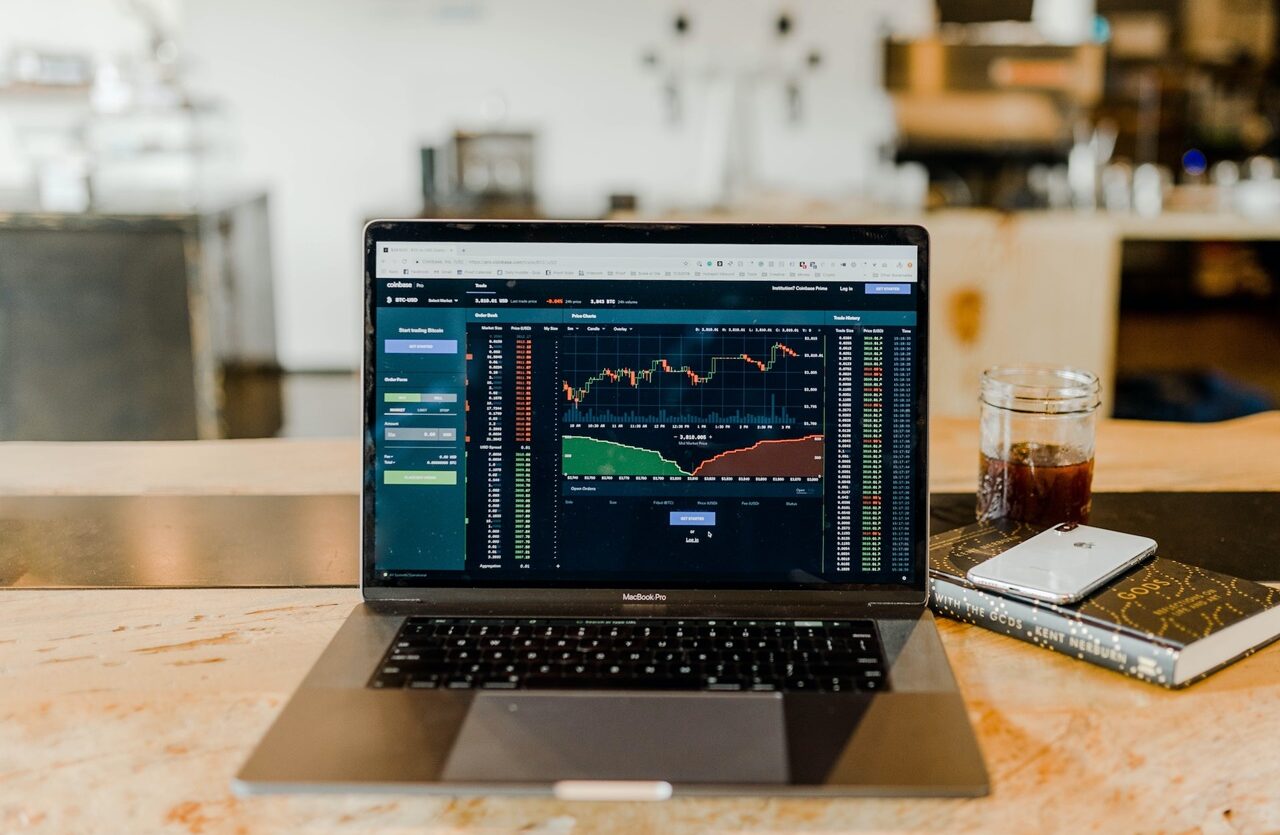Cryptocurrency trading can be an exciting and potentially lucrative venture, but it comes with its own unique language and terminology. Understanding the key terms used in the cryptocurrency market is essential for beginners to navigate the world of trading effectively. In this beginner’s guide to market lingo, we will explore common cryptocurrency trading terms and their meanings, popular crypto trading lingo, the importance of having access to a comprehensive cryptocurrency market glossary, understanding Bitcoin and Ethereum trading terminology, essential trading vocabulary for cryptocurrencies, the benefits of understanding cryptocurrency trading terminology, tips for learning and mastering the terminology, the importance of staying updated on crypto trading lingo, best practices for using cryptocurrency trading terminology, and conclude with a compelling call to action.
Common Cryptocurrency Trading Terms and Meanings
To start our journey into the world of cryptocurrency trading, let’s familiarize ourselves with some common terms and their meanings:
- Blockchain: A distributed, decentralized, public ledger used for recording transactions. Blockchain technology ensures transparency, immutability, and security in the cryptocurrency ecosystem.
- Crypto wallet: A secure digital wallet used to store, send, and receive digital currencies. A crypto wallet consists of a public key for receiving funds and a private key for authorizing transactions.
- Private key: A secret string of random numbers used to authenticate and authorize transactions. It is crucial to keep the private key secure to prevent unauthorized access to your crypto assets.
- Bull market and bear market: A bull market refers to a period of rising asset prices, while a bear market refers to a period of falling asset prices. Understanding market trends is essential for making informed trading decisions.
- Order book: The order book displays current buy and sell orders in real time. It provides information about the demand and supply of a particular cryptocurrency.
- Bid price and ask price: The bid price is the price at which people are trying to sell an asset, while the asking price is the price at which people are trying to buy an asset. The bid-ask spread is the difference between these two prices and reflects the liquidity of the market.
- Spread: The spread refers to the difference between the buy and sell price of an asset. A narrower spread indicates higher liquidity and tighter market conditions.
- Buy orders and sell orders: Buy orders are created to purchase an asset at a designated price, while sell orders are created to sell an asset at a designated price. These orders help traders execute their desired transactions at specific prices.
- High and low: High refers to the peak price an asset has reached in a 24-hour trading cycle, while low refers to the lowest price during the same period. These values provide insights into the price volatility of a cryptocurrency.
- Slippage: Slippage is the difference between the expected and actual execution price of a trade. It is often experienced during periods of high market volatility or low liquidity.
- Day trading: Day trading involves the rapid buying and selling of financial instruments within the same trading day. Day traders aim to profit from short-term price fluctuations.
- Execution: Execution means that the trading process has been completed. It signifies the successful fulfilment of a buy or sell order.
- Cold storage: Cold storage is the practice of storing digital money in an offline wallet to protect it from unauthorized access and cyber hacks. It provides an added layer of security by keeping the private keys offline.
- Satoshi: A Satoshi is the smallest unit of Bitcoin, worth 0.00000001 BTC. It is named after the pseudonymous creator of Bitcoin, Satoshi Nakamoto.
- Confirmation: Confirmation is the inclusion of a transaction in a single block within the Bitcoin blockchain. A transaction becomes more secure as it receives additional confirmations from subsequent blocks.
- Transaction fees: Transaction fees are incurred with each Bitcoin transaction and paid to miners for their services. They incentivize miners to include transactions in the blockchain and ensure network security.
Understanding these terms will provide a solid foundation for your cryptocurrency trading journey. Now, let’s delve into the popular crypto trading lingo used in the market.
Popular Crypto Trading Lingo
In addition to the common trading terms, there is a wide range of crypto trading lingo used in the market. Here are some popular crypto trading terms you should know:
- Blockchain: A decentralized ledger that records transactions across multiple computers or nodes. It ensures transparency, security, and immutability in various industries.
- Cryptocurrency: Cryptocurrency is a digital currency that uses cryptography for security and operates independently of a central bank. Bitcoin, Ethereum, and Litecoin are some well-known cryptocurrencies.
- Altcoin: Altcoin refers to any cryptocurrency other than Bitcoin. Examples of altcoins include Ethereum, Ripple, and Litecoin.
- Exchange: An exchange is a platform for buying, selling, and trading cryptocurrencies. Popular cryptocurrency exchanges include Binance, Coinbase, and Kraken.
- Volatility: Volatility refers to rapid and significant price fluctuations in the cryptocurrency market. Cryptocurrencies are known for their high volatility, which presents both opportunities and risks for traders.
- Liquidity: Liquidity refers to the ease of buying or selling an asset without causing significant price changes. High liquidity allows for efficient trading with minimal impact on the market price.
- Liquidity pools: Liquidity pools are funds locked in a smart contract for trading in decentralized exchanges. They enable users to trade cryptocurrencies without relying on traditional order books.
- Market order: A market order involves buying or selling crypto at the best available price in the market. Market orders prioritize immediate execution over price.
- Order book: An order book is a record of buy and sell orders for a specific cryptocurrency. It provides insights into the supply and demand dynamics of a particular market.
- Take profit: Take profit is an order type that automatically sells crypto when its price reaches a predetermined profit level. It allows traders to lock in gains and exit their positions.
- Stop loss: A stop loss order automatically sells crypto once a specified price is reached to limit losses or lock in profits. It helps traders mitigate potential losses by setting a predetermined exit point.
- Positions: Positions refer to the holdings or open trades of a trader in a specific cryptocurrency. Traders may have long (buy) or short (sell) positions based on their market expectations.
- Spread: Spread refers to the difference between the highest bid and lowest ask price in a market. A narrower spread indicates higher liquidity and tighter market conditions.
- Longing: Longing refers to buying a cryptocurrency with the expectation that its price will rise. Traders go long when they anticipate an upward price movement.
- Shorting: Shorting refers to selling a cryptocurrency with the expectation that its price will decline. Traders go short when they anticipate a downward price movement.
- Market cap: Market cap is the total value of a cryptocurrency calculated by multiplying its price by the number of available coins. It is used to rank cryptocurrencies by their overall value in the market.
- Candlestick chart: A candlestick chart is a graphical representation of the price movements of a cryptocurrency over a specific period. It provides insights into price patterns and trends.
- Support level: Support level refers to a price level expected to cause the price to stop falling and potentially rise. Traders often look to support levels as potential buying opportunities.
- Resistance level: Resistance level refers to a price level expected to cause the price to stop rising and potentially fall. Traders often consider resistance levels as potential selling opportunities.
- Derivatives: Derivatives are financial instruments that derive their value from an underlying crypto asset. Examples of crypto derivatives include futures contracts and options.
- Arbitrage: Arbitrage involves taking advantage of price differences in different markets to make a risk-free profit. Traders exploit inefficiencies in prices across exchanges to buy low and sell high simultaneously.
- Yield: Yield refers to the return on an investment expressed as a percentage. In the crypto space, yield can be generated through staking, lending, or providing liquidity.
- Yield farming: Yield farming involves providing liquidity to decentralized exchanges or lending platforms to earn rewards. It allows crypto holders to maximize their returns by participating in various DeFi protocols.
- Leverage: Leverage is the use of borrowed funds to increase potential returns. It amplifies both profits and losses in trading positions.
- Technical analysis: Technical analysis involves studying historical price and volume data to forecast future price movements. Traders use various indicators and chart patterns to identify trends and make trading decisions.
- Fundamental analysis: Fundamental analysis involves evaluating a cryptocurrency’s intrinsic value based on economic and financial factors. It considers factors such as project teams, technology, adoption, and market demand.
- Bull market: A bull market refers to a prolonged period of rising prices and optimism among traders. Bull markets are characterized by increasing buying pressure and upward price trends.
- Bear market: A bear market refers to a prolonged period of falling prices and pessimism among traders. Bear markets are characterized by increasing selling pressure and downward price trends.
- HODL (Hold On for Dear Life): HODL is a term used to encourage holding onto cryptocurrencies as a long-term investment strategy. It originated from a misspelling of “hold” in a popular Bitcoin forum post.
By familiarizing yourself with these terms, you will be able to better understand discussions and analysis within the cryptocurrency trading community. Let’s now explore where to find a comprehensive cryptocurrency market glossary.
Overview of Cryptocurrency Market Glossary
Having access to a comprehensive cryptocurrency market glossary is invaluable for beginners entering the world of trading. A market glossary provides definitions and explanations of the various terms used in the cryptocurrency space, helping traders navigate the complex terminology. If you’re looking for a reliable source for a comprehensive cryptocurrency market glossary, Bitnews NZ is one such platform that offers news, prices, crypto offers, and guides related to Bitcoin and other cryptocurrencies.
Bitnews NZ is a trusted website that provides educational content and resources for beginners and experienced traders alike. They offer a wide range of articles covering cryptocurrency trading terminology, market trends, and investment strategies. By visiting the Bitnews NZ website, you can access a wealth of information to enhance your understanding of the crypto market. Their comprehensive glossary will enable you to familiarize yourself with the language used by traders, making it easier to interpret market trends and engage in informed discussions.
When it comes to learning about cryptocurrency trading terminology, Bitnews NZ is a reliable source that provides up-to-date information and educational content. Whether you’re a beginner or an experienced trader, their website offers valuable resources to expand your knowledge and stay informed about the latest developments in the world of cryptocurrencies. Make sure to visit Bitnews NZ for more details and explore their comprehensive cryptocurrency market glossary to enhance your understanding of trading terminology.
Understanding Bitcoin and Ethereum Trading Terminology
Bitcoin and Ethereum are two of the most prominent cryptocurrencies in the market. To effectively navigate the world of cryptocurrency trading, it is crucial to understand specific trading terminology related to these digital assets. Let’s explore some key terms:
- Bitcoin: Bitcoin is a decentralized cryptocurrency created in 2009. It operates on a peer-to-peer network without the need for a central authority. Bitcoin is often referred to as digital gold and has established itself as the leading cryptocurrency in terms of market capitalization and adoption.
- Blockchain: Blockchain is a digital ledger used for recording cryptocurrency transactions. In the context of Bitcoin and Ethereum, blockchain technology ensures transparency, security, and immutability of transaction records. The decentralized nature of blockchain eliminates the need for intermediaries, making transactions more efficient and secure.
- Coinbase: Coinbase is one of the leading cryptocurrency exchange platforms. It provides a user-friendly interface for buying, selling, and storing various cryptocurrencies, including Bitcoin and Ethereum. Coinbase has played a significant role in cryptocurrency adoption, making it easier for individuals to enter the crypto market.
- Cryptocurrency: Cryptocurrency is a digital currency that uses cryptography for security and operates independently of a central bank. It leverages blockchain technology to enable secure and decentralized peer-to-peer transactions. Bitcoin and Ethereum are prime examples of widely adopted cryptocurrencies.
- Dogecoin: Dogecoin started as a joke but gained popularity and support from Elon Musk. It was created in 2013 and features the Shiba Inu dog from the “Doge” meme as its logo. Although initially intended as a fun and lighthearted cryptocurrency, Dogecoin has gained a dedicated following and has been used for charitable initiatives.
- Ethereum: Ethereum is an open-source blockchain-based software that controls the cryptocurrency ether. It was proposed by Vitalik Buterin in 2013 and has since become a leading platform for decentralized applications (DApps) and smart contracts. Ethereum enables developers to build and deploy smart contracts, which are self-executing agreements with predefined conditions.
- FUD: FUD refers to negative information that affects an asset’s value. It stands for Fear, Uncertainty, and Doubt and is often used in the context of spreading rumours or misinformation to manipulate market sentiment. Traders should be cautious of FUD and conduct thorough research before making investment decisions.
- HODL: HODL is a term used by bitcoin bulls to signify holding onto their investment despite market fluctuations. It originated from a misspelling of “hold” in a popular Bitcoin forum post. The term emphasizes a long-term investment strategy and encourages investors to remain resilient during market volatility.
- Mining: Mining is the process of creating new bitcoins using high-powered computers. Miners solve complex mathematical problems to validate and add transactions to the blockchain. In return for their computational effort, miners are rewarded with newly minted bitcoins.
- NFTs: NFTs (Non-Fungible Tokens) are unique digital assets linked to the Ethereum blockchain. Unlike cryptocurrencies such as Bitcoin, which are fungible and can be exchanged on a like-for-like basis, NFTs represent ownership of unique items such as digital artwork, collectables, and virtual real estate.
- Satoshi Nakamoto: Satoshi Nakamoto is the pseudonymous creator(s) of bitcoin. The true identity of Satoshi Nakamoto remains unknown, but the Bitcoin whitepaper published under this name in 2008 introduced the concept of a decentralized digital currency.
- Satoshis: Satoshis are the smallest units of bitcoin. They are named after the pseudonymous creator of Bitcoin, Satoshi Nakamoto. One bitcoin is divisible into 100 million satoshis, allowing for microtransactions and precise value representation.
- Wallet: A wallet in the crypto world is used to store digital currency and requires a secure password. It can be a software wallet installed on a computer or smartphone or a hardware wallet that stores the private keys offline for enhanced security.
Understanding the specific terminology related to Bitcoin and Ethereum is essential for effectively engaging in trading activities and staying informed about market developments.
Essential Trading Vocabulary for Cryptocurrencies
To further expand your trading vocabulary in the world of cryptocurrencies, here are some essential terms to be familiar with:
- Crypto arbitrage trading: Crypto arbitrage trading involves buying and selling cryptocurrencies to profit from price differences between exchanges. Traders exploit the price discrepancies between different platforms to generate profits.
- All-time high (ATH) and all-time low (ATL): The all-time high refers to the highest price ever paid for a specific asset, while the all-time low refers to the lowest price ever paid. These milestones provide historical context and can influence market sentiment.
- Average Directional Index (ADX): The Average Directional Index (ADX) is a technical indicator used to gauge the strength of a trend. It helps traders identify the presence and strength of a trend in the market.
- Accumulation/Distribution Line (A/D): The Accumulation/Distribution Line (A/D) determines the supply and demand of an asset based on price and volume. It helps traders assess the buying and selling pressure in the market.
- Beta: Beta measures the relationship between a stock’s price and the overall market. In the context of cryptocurrencies, beta provides insights into the asset’s volatility relative to the broader market.
- Blue chip stocks: Blue chip stocks refer to stocks from industry-leading companies with stable growth. In the cryptocurrency world, blue chip cryptocurrencies are those with large market capitalization and established track records, such as Bitcoin and Ethereum.
- Broker: A broker is a person or platform that facilitates the buying and selling of financial instruments on behalf of investors. In the cryptocurrency market, brokers enable users to trade cryptocurrencies and provide access to liquidity.
- Bid: The bid is the price at which a trader is willing to buy a stock or cryptocurrency. It represents the highest price a buyer is willing to pay.
- Day trading: Day trading involves buying and selling financial instruments within the same trading day. Day traders aim to profit from short-term price fluctuations rather than holding positions overnight.
- Scalping: Scalping is a shorter-term trading strategy characterized by multiple trades in a day. Scalpers aim to profit from small price movements and take advantage of liquidity imbalances.
- Dividend: Dividend refers to a portion of a company’s earnings paid to its shareholders. While cryptocurrencies do not pay dividends in the traditional sense, some blockchain projects distribute tokens or rewards to token holders for participating in certain activities.
- Execution: Execution refers to successfully completing a transaction. It signifies the fulfilment of a buy or sell order at the desired price.
- Index: An index is a benchmark used to track the performance of a specific market or sector. In the cryptocurrency space, indices provide insights into the overall market trends and can be used as a reference for portfolio performance.
- Initial Public Offering (IPO): An Initial Public Offering (IPO) is the first sale of a company’s stock to the public. In the cryptocurrency space, some projects conduct Initial Coin Offerings (ICOs) to raise funds by selling their tokens to the public.
- Position: Position refers to the price point at which a trader enters the market. It represents the trader’s exposure to a specific cryptocurrency or asset.
- Leverage: Leverage is the use of borrowed funds to increase potential returns. In the context of cryptocurrency trading, leverage allows traders to control larger positions with a smaller amount of capital.
- Order: An order is a request to buy or sell a certain amount of stock or cryptocurrency at a specified price. It is submitted to an exchange or broker for execution.
- Portfolio: A portfolio is the collection of investments held by an individual or entity. In the context of cryptocurrencies, a portfolio consists of various digital assets held by a trader or investor.
- Quote: A quote refers to the latest trading price of a stock or cryptocurrency. It represents the most recent transaction price at which a buyer and seller agreed to trade.
- Rally: A rally is a rapid increase in the price of a stock or cryptocurrency. It often occurs in response to positive news, market sentiment, or increased buying pressure.
- Spread: Spread refers to the difference between the buying and selling prices of a stock or cryptocurrency. It represents the transaction cost and reflects market liquidity.
- Volatility: Volatility refers to the degree of price fluctuation in a stock or cryptocurrency. Cryptocurrencies are known for their high volatility, presenting both opportunities and risks for traders.
- Volume: Volume refers to the number of shares or coins traded in a given period. It provides insights into the level of interest and activity in a particular asset.
- Market capitalization: Market capitalization is the total value of a company or cryptocurrency calculated by multiplying its price by the number of available coins or shares. It is used to rank assets by their overall value in the market.
Expanding your trading vocabulary with these terms will enable you to communicate effectively, understand market dynamics, and make informed trading decisions. Now, let’s explore the benefits of understanding cryptocurrency trading terminology.
Benefits of Understanding Cryptocurrency Trading Terminology
Having a good grasp of cryptocurrency trading terminology offers several advantages:
- Enhanced trading strategies: Understanding the language of crypto trading allows you to analyze market trends, identify opportunities, and develop effective trading strategies. By familiarizing yourself with the terminology, you can interpret market indicators and make more informed trading decisions.
- Informed decision-making: Familiarity with trading terms enables you to make informed decisions based on market indicators, news, and technical analysis. By understanding the language used in the cryptocurrency market, you can better interpret market conditions and assess the potential risks and rewards of a trade.
- Increased profitability: By understanding cryptocurrency trading terminology, you can better interpret market trends, manage risks, and potentially increase your profitability. With a strong grasp of the terminology, you can identify and capitalize on market inefficiencies and opportunities.
- Confidence in discussions: Understanding the terminology used in cryptocurrency trading allows you to actively participate in discussions, engage with other traders, and ask informed questions. It gives you the confidence to contribute meaningfully to conversations and share insights with the trading community.
By investing time and effort into learning and understanding cryptocurrency trading terminology, you position yourself for greater success in the market. Now, let’s explore some tips for learning and mastering the terminology.
Tips for Learning and Mastering Cryptocurrency Trading Terminology
To effectively learn and master cryptocurrency trading terminology, here are some practical tips:
- Educational resources: Utilize educational resources such as books, online courses, and forums dedicated to cryptocurrency trading. These resources can provide valuable insights and explanations of trading terms. Websites like Bitnews NZ offer educational content and guides, making it easier for beginners to learn about trading terminology.
- Practice in a demo account: Open a demo trading account to practice using the terminology in simulated trading scenarios. This hands-on experience will help solidify your understanding and familiarize you with the practical application of the terminology.
- Engage with the community: Participate in cryptocurrency trading communities and forums where traders share insights and discuss trading strategies. Engaging with experienced traders can help you gain practical knowledge and learn the language of the market. By actively participating in discussions, asking questions, and sharing your experiences, you can deepen your understanding of trading terminology.
- Follow reputable sources: Stay updated with reliable news sources and blogs that cover cryptocurrency trading. These sources often explain trading terms and provide analysis of market trends. Bitnews NZ is a reputable source that offers news, prices, and guides related to Bitcoin and other cryptocurrencies. By following their website, you can access valuable insights and information to enhance your understanding of trading terminology.
- Stay curious and continue learning: The cryptocurrency market is constantly evolving, and new terms and concepts emerge regularly. Stay curious and continue to expand your knowledge by reading books, attending webinars, and exploring new resources. By staying up to date with the latest developments, you can keep pace with the evolving trading terminology.
By implementing these tips and actively engaging with the trading community, you can accelerate your learning process and master the language of cryptocurrency trading. Now, let’s discuss the importance of staying updated on crypto trading lingo.
The Importance of Staying Updated on Crypto Trading Lingo
The cryptocurrency market is dynamic and constantly evolving. New terms and trends emerge regularly, making it crucial to stay updated on crypto trading lingo. By staying informed, you can effectively communicate with other traders, understand market sentiment, and adapt your trading strategies accordingly.
Staying updated on crypto trading lingo is important for several reasons:
- Understanding market discussions: The cryptocurrency community frequently uses specific terms and acronyms to discuss market trends, analysis, and investment strategies. By staying updated on the latest lingo, you can actively participate in conversations, understand market sentiment, and contribute meaningfully to discussions.
- Keeping pace with market trends: The cryptocurrency market is known for its rapid developments, new projects, and emerging trends. By staying updated on crypto trading lingo, you can better understand the latest market trends and identify potential opportunities. This knowledge allows you to adapt your trading strategies and seize new possibilities as they arise.
- Enhancing decision-making: Staying updated on crypto trading lingo provides you with valuable insights that can enhance your decision-making process. By understanding the meaning of specific terms and their implications, you can assess market conditions more accurately, make informed trading decisions, and manage your risk effectively.
- Expanding your network: Staying updated on crypto trading lingo allows you to connect with like-minded individuals and expand your network within the trading community. It enables you to engage in discussions, share insights, and forge connections with experienced traders. Your network can provide valuable guidance, support, and opportunities for collaboration.
To stay updated on the latest crypto trading lingo, it is recommended to regularly visit reputable sources such as Bitnews NZ. Their website provides reliable news, prices, and guides related to Bitcoin and other cryptocurrencies, ensuring you stay informed about the latest developments in the world of crypto trading.
Best Practices for Using Cryptocurrency Trading Terminology
Using cryptocurrency trading terminology effectively is crucial for clear communication and effective collaboration within the trading community. Here are some best practices for using cryptocurrency trading terminology:
- Clear communication: When using trading terminology, strive for clear and concise communication. Clearly articulate your thoughts and ideas using the appropriate trading terms. This helps avoid misunderstandings and ensures effective communication with other traders.
- Contextualize terms: Provide context when using trading terms to help other traders understand your point of view. Explain the relevance of a term to the current market situation or use examples to illustrate its application. This ensures that others can comprehend your perspective and engage in meaningful discussions.
- Avoid jargon overload: While using trading terminology is important, be mindful of overwhelming others with excessive jargon. Tailor your language to the audience and the context of the discussion. Use terms judiciously and be prepared to explain them if necessary.
- Respectful discussions: Engage in respectful discussions and debates within the trading community. Be open to different perspectives and be willing to learn from others’ experiences and knowledge. Respectful discourse fosters a collaborative environment and promotes the sharing of valuable insights.
- Continual learning: The cryptocurrency market is constantly evolving, and new terms and concepts emerge regularly. Embrace a mindset of continuous learning and stay curious about new developments. Keep exploring new resources, attending webinars, and reading books to expand your knowledge and stay up to date with the latest trading terminology.
By following these best practices, you can effectively communicate and engage with the cryptocurrency trading community, fostering productive discussions and building meaningful connections.
Conclusion: Start Your Cryptocurrency Trading Journey Today
In this comprehensive beginner’s guide to cryptocurrency trading terminology, we have explored common terms used in the cryptocurrency market, popular crypto trading lingo, the importance of having access to a comprehensive cryptocurrency market glossary, understanding Bitcoin and Ethereum trading terminology, essential trading vocabulary for cryptocurrencies, the benefits of understanding cryptocurrency trading terminology, tips for learning and mastering the terminology, the importance of staying updated on crypto trading lingo, and best practices for using cryptocurrency trading terminology.
By familiarizing yourself with the terminology used in the cryptocurrency market, you can navigate the world of trading more effectively, make informed decisions, and engage in discussions with confidence. Continuously expanding your knowledge and staying updated on the latest developments will further enhance your trading skills and increase your chances of success.
Start your cryptocurrency trading journey today and visit Bitnews NZ for the latest news, prices, and guides in the world of Bitcoin and cryptocurrencies. Bitnews NZ is a reliable source of information and educational content, offering valuable resources to help you stay informed and thrive in the ever-evolving cryptocurrency market. Take advantage of their comprehensive glossary and educational materials to deepen your understanding and embark on your cryptocurrency trading journey with confidence.









